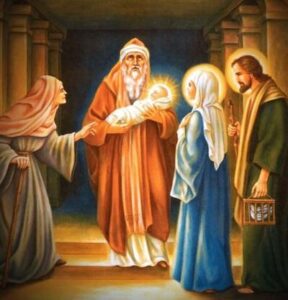The Christian connection to Groundhog Day

People hoping for an early spring will be checking to see if the groundhog sees its shadow today. What they may not realize is that Groundhog Day has Christian roots.
The tradition can be traced to the Christian holiday of Candlemas Day, when Christians would take their candles to the church to have them blessed, according to Yahoo News. It wasn’t until Candlemas Day was introduced in Germany that an animal was brought into the lore, claiming that if a hedgehog saw his shadow on Candlemas Day there would be a “second winter” or six more weeks of bad weather.
https://twitter.com/visitPA/status/1621122592558964738
After German settlers came to what is now the United States, the Pennsylvania Dutch and other German-speaking immigrants maintained the same tradition of Groundhog Day. But with the absence of hedgehogs in their new home, woodchucks were chosen instead. The earliest known American reference to Groundhog Day was in a Morgantown, Pa., shopkeeper’s journal entry dated February 4, 1841.
“Last Tuesday, the 2nd, was Candlemas Day, the day on which, according to the Germans, the Groundhog peeps out of his winter quarters and if he sees his shadow he pops back for another six weeks nap,” the entry said. “But if the day be cloudy he remains out, as the weather is to be moderate.”
Here are five more trivial facts about Groundhog Day:
- Punxsutawney Phil, the legendary groundhog who casts his prediction, reputedly has been operating in the Pennsylvania town for more than 130 years. Despite the lifespan of a groundhog usually being less than six years, the Punxsutawney Groundhog Club’s Inner Circle maintains they have been speaking to the same groundhogsince 1887.
- Punxsutawney’s first Groundhog Day in Gobbler’s Knob dates back to 1887, when the town’s newspaper editor Clymer Freasinformed his readers: “Today is groundhog day and up to the time of going to press the beast has not seen its shadow.”
- Punxsutawney Phil has seen his shadow 106 times and not seen his shadow 20 times, according to the Punxsutawney Groundhog Club. Of these times, the National Oceanic and Atmospheric Administration found that the groundhog’s forecasts have been about 40 percent correct within the last 10 years.
- Groundhogs are also referred to as “woodchucks,” forming the basis for the tongue-twister: “How much wood would a woodchuck chuck if a woodchuck could chuck wood?”
- Other states and towns have their own Groundhog Day events marked by their own residing groundhog. In Milltown, N.J., attendees await the weather forecast from Milltown Mel. Staten Island Chuck is the name given to New York City’s official weather-forecasting woodchuck, who is housed at the Staten Island Zoo.







